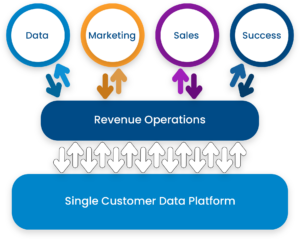The Android Automotive OS 12L Update Is Huge!
The Android Automotive OS 12L update is now available for vehicles that run on Android Automotive, like the Polestar 2 and the Volvo XC40 Recharge, to name a few.
So what’s new with this 12L update for Android Automotive? Well, first off, there are now Quick Controls available. OEMs can add selected settings to these, like Bluetooth toggles, Status bar or other system UI elements. This will allow users to “change key settings safely while driving, without opening the Settings app”. Which is pretty important. Of course, this is going to depend on how car makers adopt the new features. So they could differ by vehicle.
Android Automotive gets a notification overhaul
New in 12L, Android Automotive notifications will get improved grouped notifications. There is also support for rotary controllers and some bug fixes.
Also included in this update are some improvements for Bluetooth reconnection performance. Car OEMs will also be able to “preview from automotive camera services, while said manufacturers can now remotely enable ADB and other Android developer options remotely”.
Overall, it’s not a huge user-facing update for Android Automotive, and that’s a good thing. You don’t really want to do a huge makeover to a system that runs your cars. As that means people need to relearn how to use it. And that’s not something you want in a vehicle.
It’s unclear how long it’ll take for manufacturers to start rolling out this update to their vehicles. But Volvo and Polestar have been pretty quick to roll out Android Automotive updates in the past.
Here’s the full developer changelog for Android Automotive OS 12L
Google also released the full developer changelog for Android Automotive OS 12L, which can be found below.
System UI and core apps improvements
- Quick Controls feature. Enables OEMs to add selected settings (for example, Bluetooth toggles) to SysUI (for example, the Status bar) to enable users to change key settings safely while driving, without opening the Settings app.
- Rotary support. Improvements and bug fixes.
- UI Customization. Enabled plugin architecture for custom classes. See Car UI Plugins for details.
- Notification visual overhaul. UX overhaul and grouped notifications improvements.
Bluetooth
- Improved Bluetooth reconnection performance. Automatically connect to devices more often and under the right circumstances. To learn more, see Bluetooth connection management.
- Messaging database. Support for using a messaging database through the Message Access Profile (MAP) to provide more flexibility to messaging apps that rely on Bluetooth.
Connectivity
- Per-Application Network Selection (PANS). Enable the creation and enforcement of a dynamic network policy that determines which applications can use
OEM_PAID networks. - Dual STA. Enable the IVI to connect to an OEM restricted Wi-Fi network, concurrently with a primary connection to a Wi-Fi network.
Audio
- Audio ducking signal. Provides HAL with audio focus state and information on what output devices to duck.
- Volume improvements. Enable for finer control of volume, including providing and API to get active volume groups.
- Muting per volume group. Enable per volume group muting and enhance HAL and UI communication about the mute states.
- AIDL migration for the AudioControl HAL. Migrated the AudioControl HAL from HIDL to AIDL to fully use AIDL functionality.
- Power policy handling for Audio. Enabled power handling functionality for the car audio service, including disable and enable focus requests, and mute and unmute volume groups on power policy changes for audio.
Camera
- CarEvsManager. Enables OEMs to implement Android Activity that shows the preview from automotive camera services.
System reliability and stability
- Car watchdog flash memory management. Manages system flash memory by limiting the amount of data written to storage. Enables OEMs to define the write thresholds (for OEM, media, and maps packages) and collect statistics for OEM applications. Disables and terminates non-critical applications and services that exceed defined thresholds.
Security
- Vehicle bound encryption. Android storage encryption can now be configured to store some key encryption parameters on an external ECU. This prevents the harvesting of data by removing the head unit from the car (for example, due to theft or relegated to a junkyard).
- Secure developer options. Android developer options and ADB can be remotely enabled exclusively by an OEM. Reference implementation provides crypto token access mechanisms and remote web service.
Location
- Advanced driver-assistance systems (ADAS) location switch. Access to device location for apps used for ADAS can now be controlled with a separate location switch in the Settings app.
Telemetry
- Edge-based analytics capability. Enables the ability to perform more edge-based metrics processing on Android Automotive devices. Android infotainment and vehicle property metrics can be configured in scripts written in the Lua language and processed on-device to be sent to the backend of OEM choosing.
Compliance
- Compliance fixes. A number of patches ensure compliance with the Android certification test suites. The Android 12L AAOS Release is 100% compliant on CTS, CTS-Verifier, and STS test suites on our internal reference platform with no additional fixes needed in the AOSP software.








